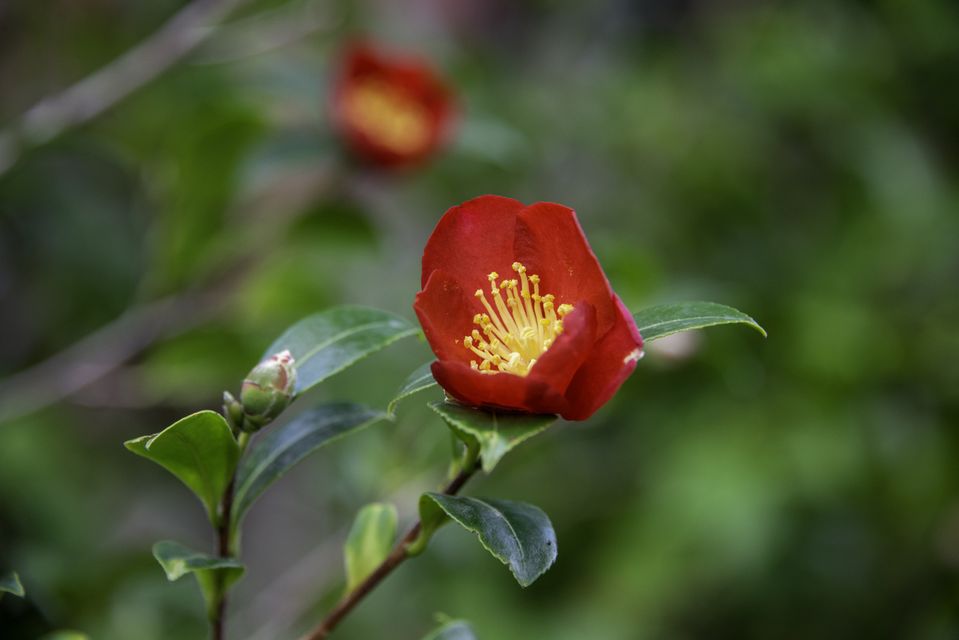The Christmas retail season is in full swing complete with maddening traffic jams, queues at the tills and festive songs on repeat. Take a break from it all and visit your local garden centre to stock up on some indoor plant gifts.
This does not have to be confined to a potted plant for gran. There’s something for every age group, from insect-eating carnivorous plants for curious young minds and low-maintenance succulents and cacti for youngsters who are living away from home for the first time to fashionable foliage focal points for interior-conscious adults who want to be on trend and, yes, for granny as well, perhaps something floral like an azalea.
A beautiful orchid will please most people and, if you choose the most popular variety, which is the moth orchid or Phalaenopsis, it will provide flowers for many months with a low-maintenance routine.
Poinsettias grown in Co Meath
You really know it’s Christmas when you see the truckloads of poinsettias on sale. This is the top seasonal seller and is easily found in many other retail outlets such as supermarkets, DIY and florists. The scarlet and green leaf combination is the festive season wrapped up in a pot.
To avoid disappointment, keep well-protected on the journey home from the shops. Poinsettia’s natural habitat is in the tropical forests on the Pacific-facing slopes of Mexico and central America. There it grows wild and tall, enjoying the humid and warm environment. It gets a shock when it is put in a chilly car or exposed to draughts in a cold hallway and can respond by dropping its leaves. Keep somewhere warm but avoid direct sources of heat such as radiators or fires.
Under or over watering is the most common way to kill most indoor plants so try to strike a balance. Stick your finger an inch into the compost — if it’s dry, water but make sure any excess water drains away, and if it’s moist, it doesn’t need any more for the moment.
A wreath from nettiesflowers.ie
If you’re looking for an easy-to-grow but tropical-looking houseplant to give as a gift, try a bromeliad such as Aechmea. This comes from South America and grows on trees in the tropical forests, using its roots to anchor itself to the tree but isn’t a parasite — it derives its food from the surrounding debris, not the tree itself.
‘Blue Rain’ is a vibrant cultivar and has an unusual-shaped flower spike in electric blue, hot pink and purple and will last for many months. Grow in a warm, bright environment but keep out of direct sunlight.
The foliage grows in such a way as to create a central urn or vase, and this is where you need to put water. You should change this water completely every month to stop odours and bacteria building up. The mother plant will die after flowering but, at that stage, it should have produced plantlets or “pups”, as they are sometimes known, and these can be potted on.
For a sustainable floral gift that will last for years, dried flowers from Nettie’s Flowers are the way go to. Annette Dalton has a flower farm in Killorglin, Co Kerry, and only sells flowers she has grown and dried herself (yes, really — no imports.) Top seasonal gifts include dried flower wreaths (24cm-34cm) from €40-€70, and gorgeous dried flower arrangements in vintage-style vases for €40-€45. (nettiesflowers.ie)
Read more
Plant of the week
Camellia ‘Yuletide’
Camellia ‘Yuletide’
In keeping with the season, Camellia ‘Yuletide’ is a welcome and festive sight with its dark green glossy leaves and brilliant red flowers. For the best flowers, plant camellias in a partially shaded spot with protection from cold, drying winds. They prefer acid to neutral soil so an annual addition of leaf or bark mulch will be welcome, and if planting in containers, choose ericaceous compost. The buds of camellia can be delicate — make sure they don’t dry out in the summer when they are forming, and a liquid feed during spring and summer will help boost bud formation.
Reader Q&A
I’ve noticed that some of the spring bulbs I planted in September are now sprouting. Is this normal and will they survive the winter?
Declan
Spring bulbs sprouting in winter
Yes, this can happen, as bulbs can get confused by unusual weather conditions. It’s usually just the foliage that comes up and that is robust enough for the winter. Once the winter cold becomes more settled, so will they, and they will enter a period of dormancy. In spring, they should flower as normal.
Submit your gardening questions to Diarmuid via his Instagram @diarmuidgavin using the hashtag #weekendgarden



